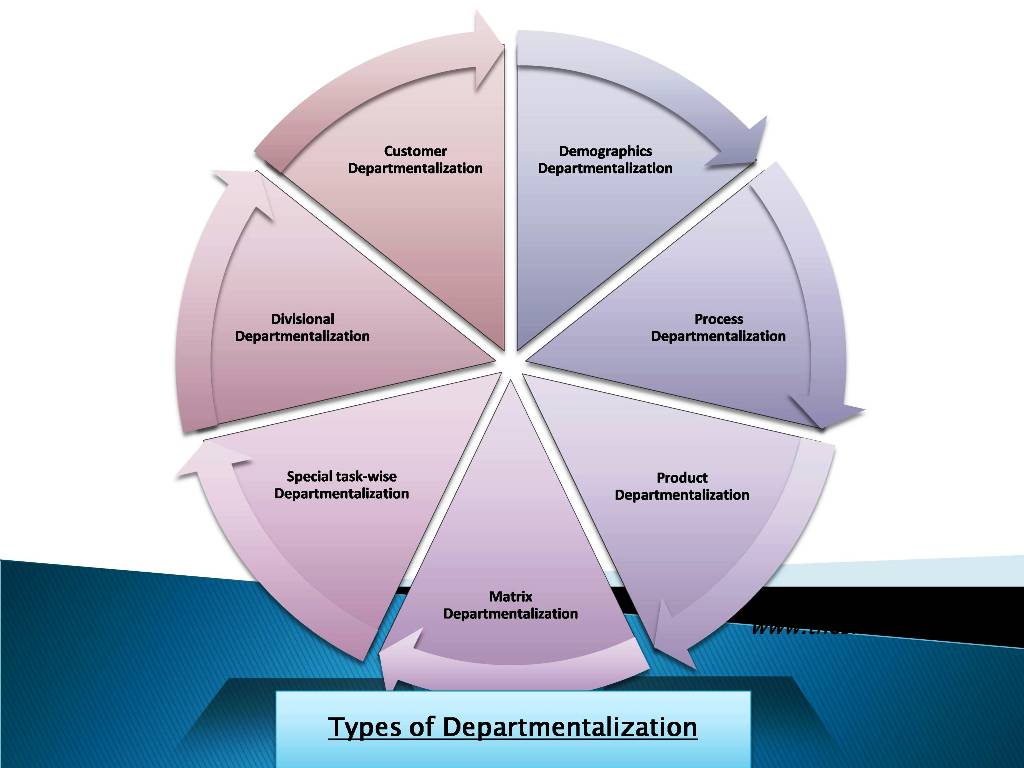Have you ever imagined how big companies like Google, HP, Wipro, ONGC, Hindustan Unilever, and others manage their vast business expanded in multiple countries? The answer is departmentalization that is one of the business processes adopted by most organizations. It is pretty hard to imagine the presence of a conglomerate without that.
In this article, we will explain the concept, process, importance, and types of departmentalization in any organization with examples.
Table of Contents
What is Departmentalization?
Departmentalization is a process that an organization adopts to enhance productivity and efficiency. In simple words, various actions performed in an organization are clubbed or grouped into different departments in the process. This sort of progression is taken up by the organizations, whether they are public or private sector.
Examples
A multinational company headquartered in the USA creates a special department to deal with Indian business based on local culture and social and political needs. Even in national companies, they develop departments based on various regions like north, south, etc. Google India is a subsidiary company, or department of the parent company created based on demographics.
The well-known company TATA created Tata Consultancy Service (TCS) for dealing with software and IT-related services. This is an example of product departmentalization. Even a multi-product store makes departments such as front end, back end, customer service, and many more.
Types of Departmentalization
In the corporate sector, many types of departmentalization are prevalent. There are no sure short ways to define the exact number of departmentalization. It varies based on industry, size, nature of employment, work demographics, and others. However, these are some major types of it that are pretty common among companies.

1) Demographics Departmentalization –
It is also called geographic departmentalization, where big companies divide the organization into different departments based on where they are operating. Creating departments depends on the organization, but when they use the demography as a primary point for division, it is called demographics departmentalization.
2) Process Departmentalization –
To maintain adequate material and workforce, companies opt for this type. Their operations run as there is no clash between different production units. Conglomerate companies or the ones with so many diverse functions follow this type of departmentalization.
3) Product Departmentalization –
In large-scale companies dealing with multiple products, maintaining smooth operations is always challenging. Products with high demand get priorities in man and material, but those having low demand get ignored. Giving equal weightage to every product category becomes an arduous task for the higher class executives. In those scenarios, product-based departmentalization becomes a savior for the companies. They get a better way to take along all the products and bring synergy to the company.
4) Matrix Departmentalization –
This type is gaining ground in the recent past due to the advent of a more focused approach to achieving higher goals in a short period. We may call it hyper departmentalization, where various employees are taken up and made to work as a team to serve the customer and company in a better way.
Here synchronization of multiple components into a single entity takes place to complete the task. It is more prevalent among public sector companies and departments. Employees from finances, accounting, information technologies, production, quality, and others verticals work to achieve the common goal.
Let’s say an employee working in the accounts sections may have good technical knowledge. So, here an organization taps those talented employees by proficiently utilizing them.
5) Special task-wise Departmentalization –
A business has to deal with many major and minor factors that affect their day to day operation. Many times such a circumstance erupts where the higher executives need to give special attention. A special task force is mainly formed to serve the primary purpose of bringing business continuity and fulfilling the company’s other obligations.
Suppose a widespread flood in some parts of the country, and all the standard delivery chain is broken. Here, it is the organization’s responsibility to ensure a consistent flow of products and services to flood-affected places. Once the end goal of the task force is fulfilled, businesses return to their typical structure by dismantling the departments.
6) Divisional Departmentalization –
An organization often gets inclined/forced towards starting a separate business entity in a constantly changing working environment. It is also known as creating a subsidiary in the business terminology.
7) Customer Departmentalization –
Customers are the blood and soul of any business, and it becomes virtually impossible to run the business without them. In recent pasts, companies are creating departments based on customer’s needs and preferences. Most services sector companies, mainly banks, telecom, insurance, etc., follow this set of departmentalization.
You might have observed that post-paid customers get better treatment than prepaid ones by a mobile network provider. Banks divide the departments as a credit card, debit card, loan processing, loan recovery, reconciliation, etc.
Purpose of Departmentalization
The primary purpose of choosing departmentalization is to give a common goal to employees working in similar types of work for the betterment of the organization. It also helps fix the responsibilities and encourages employees to perform better to get high on the ladder.
In most cases, a department is headed by senior executives, managers, team leaders, or other terminology that varies among private and public sectors. The head is the highest hierarchy of the departments and professionally delegates the work/ tasks to their subordinates. Various departments make a formal structure in the organization and get bits of help in getting more business prospects.
Factors of Departmentalization
While choosing departmentalization, an organization considers various factors such as control, specialization, proper attention, local condition, expenditure cutting, human resource, business prospects, and others.
Why is Departmentlizaiton important for organizations?
- The departmentalization process leads to better administration control and increased chances of growth and expansion. The separate entity gets their clear and precise responsibility.
- The head of the division feels the autonomy in making decisions under the established framework of the parent company.
- The process emphasizes the unique skills and specialized training of an employee for the betterment of the organization.
- Coordination within the departments and among departments becomes easy, which leads to better integration in work.
- Departmentalization focuses on the balance in terms of levels as well as consistency in character.
- Every employee feels accountability in their works that leads to high and quality performance.
- Evaluating the managing performance gets more straightforward, and upper management also gets a great way to allot the task department-wise.
Wrapping Up –
As we have already said, there are no fixed criteria for dividing the departmentalization. In current times, companies prefer to take more than one factor while creating departments. The ultimate goal of the process is to achieve business objectives by groping the activities in an arranged manner. The process is not about creating a rigid structure but giving the required autonomy and flexibility.
Recommended Articles –
